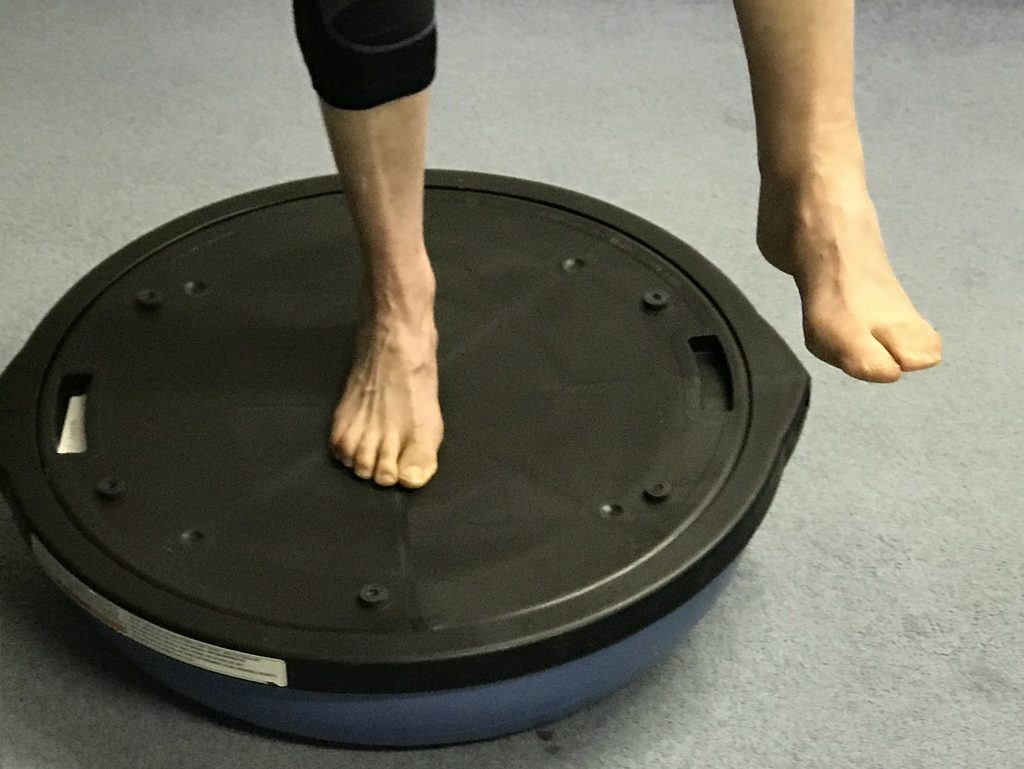
How do I fit all my training in?
Part 2 – scheduling, concurrent training, periodisation.
Now that we have considered the types of training to include in our plan, and how we monitor our response to training sessions and the recovery requirements generated, we need to think about exactly how to schedule and implement our training.
Principle 4 – Schedule your training sessions sensibly
By this I mean: avoid scheduling ‘hard’ sessions on consecutive days, include 1 or more rest days each week, and separate resistance and running sessions.
Most runners, particularly outside of the elite, should not be doing more than two ‘hard’ sessions each calendar week. (If you are considering a 10-day week for recovery reasons, then one hard session every 7 days is probably more than enough!)
What is a ‘hard’ session? It is determined by the impact the session has on the individual’s energy levels. So, a session that one person breezes through and recovers from within 24 hours may cause another person to need to rest for 2 or more days. A race (or a run done as a race) is always a hard session. For many people a long run (>2 hours), even if at a relatively easy chatty pace, is ‘hard’ due to glycogen depletion and micro-damage to body tissues. Fasted training sessions are often hard, especially for those who do not do them regularly, due to glycogen depletion. In general, intervals are hard sessions, particularly if the effort time is several minutes duration and the effort levels are high (think here of Lactate Threshold and VO2Max sessions). For those relatively new to strength work, a weights session may be hard not just on the muscles but also on the mind-body connection and may leave us fatigued neurologically as well as physically.
What about ‘easy’ sessions? Basically, it has to be easy for the individual to recover from them within 6-12 hours, so this is individual. However, short easy runs (<30 minutes), foam rolling, and developmental stretching are considered to be easier sessions suitable for rest days. Even some yoga and strength sessions (e.g., core strength work with a rep range of 25+ and maybe 1-2 sets) are not especially onerous, particularly once a person is accustomed to that type of exercise. However, the ultimate decision regarding whether a session is ‘hard’ or not relies on the person accurately assessing the impact on their energy levels. A reasonable guide is fatigue levels and/or muscle soreness. If either of these are significant, the session you just did (usually the day before) was hard for you.
For novices, a rest day should follow a hard day. For those who have been training for a few years, an easy day can follow most hard session days. An easy day could have a shorter easy run or a strength session where the loads are light and manageable, e.g., a workout of 2-3 sets of 8-12 reps of 5-6 exercises that can be done within 45-50 minutes including warm up and warm down. In all cases, one rest day every 7 days is advisable. For older athletes and novices, 2 or even 3 rest days in every 7 may be required. It all hinges on how well a person is recovering from each session – so back to Principles 1-3 outlined in Part 1 of this series, and don’t forget to ask, ‘what is this session doing to move me towards my goal?’.
Clearly for those who have been training for several years (5-10 years), doing two sessions in one day may be normal. Scheduling these is particularly important. Although the debate on this is still in progress, there is general agreement that separating resistance work from running sessions by a minimum of 6 hours is probably advisable. This is because the enzymatic systems stimulated by each type of training are different. In particular, there is evidence is that running switches off some enzymes required to build muscular strength (inhibition of the muscle synthesis pathway AKT-mTOR by AMPK, an energy sensor in the cell, causing ‘interference’ with muscular development). So, scheduling the running for early in the day and the strength work for later in the afternoon or in the early evening is better than trying to do both immediately after each other. For extremely fit individuals, or those well-accustomed to both strength and endurance work, some concurrent training sessions may be useful (where the muscular and metabolic systems are trained in the same session). So doing some strength work after a shorter and lower intensity aerobic session may be useful, especially if the individual is very short of time. It is important for the individual to keep a close eye on their recovery because what works one week may, for various reasons, not work every week (perhaps environmental factors such as work, stress etc. may interfere with recovery). However, this approach is not generally successful for recreational athletes without a long history of high-level training.
Principle 5 – Don’t neglect ‘pre-habilitation’ or maintenance strength and flexibility work – consider slotting it in after shorter easier running sessions
Many individuals ask how to successfully incorporate strength training and running! Distance running (>800m) is an activity requiring muscular endurance and a well-developed cardio-vascular system (CVS). Running trains the CVS. Resistance training improve strength endurance and power.
It is possible to maintain strength, especially strength endurance, which helps reduce our risk of injury and helps us also to run well, if a person already has a good pre-existing level of strength. Adding a small amount of strength work a couple of times a week after easy runs (i.e., shorter very chatty runs) when a person is already warmed up is efficient. There is no need for a separate warmup, so time is saved. Strength work that helps to ‘pre-habilitate’ runners, such as core and foot strength sessions, easily fits into this slot at the end of a short run. For those who are doing running drills regularly and can execute these effectively, or those doing significant amounts of hill running, these running sessions will probably provide sufficient strength work for the legs and any additional strength sessions will only be necessary for pre-habilitation reasons (to help a person insure themselves against a previous injury re-occurring).
A similar approach can be taken to other work such as flexibility. Runners routinely stretch after their runs, I hope! However, flexibility work also includes self-myofascial release (e.g., via foam rolling), and some forms of yoga, which can improve both flexibility, co-ordination, and balance. It is common for runners to neglect these less onerous sessions due to lack of time and only return to them when an injury is threatening to occur. Scheduling them into our non-training evenings, even if we only do a short session of 10 minutes, can be valuable in helping to keep us healthy and fit to train.
Principle 6 – It is probably impossible to ‘have it all’ – Building strength may require periodisation of a training plan
It is far easier to maintain existing strength than to build strength, as the latter requires significant energy. Tony Yaniro, a famous climber, said ‘if you cannot pull a single hard move, then you have nothing to endure’ meaning if the strength isn’t there to begin with, having strength endurance will be impossible. This is especially the case once the running training becomes more specific, which happens when a person is nearing their target race. At that stage, simply preserving existing strength and doing non-running activities which seek to support running and recovery is all that can be accommodated in a plan.
For those who are earlier in their running plan, and wish to build strength, periodisation of training may be useful. Personally, I feel that block periodisation (as used by athletes in the Eastern Bloc countries in the mid-20th century) and popularised in the West by those who employed these methods on Eastern Bloc athletes (e.g., Tudor Bompe) can be useful. Basically, this approach prioritises one aspect of training (e.g., strength) whilst ensuring the athlete pays some attention to other aspects of training (e.g., aerobic fitness). So, for an endurance runner, this could mean taking some weeks early in the base training period, when most running is less onerous, to build strength that is relevant for running. This allows sufficient energy for muscular development and such an approach can work well for runners who are not carrying injuries. The precise nature of the strength training should be determined by an individual’s ‘weakest link’ as working on that will generate the greatest potential return on time invested.
For those who tend to incur the same injury year on year, a program designed to address specific strength and/or flexibility/movement deficits would be a priority and could be undertaken successfully in a block at this stage in the training cycle. The skills and strength developed could then be maintained as training became more running specific and running loads built up. Co-ordination is an important aspect of movement so a strength program that also involves utilisation of strength in running specific movements can be a wise investment of energy.
Clearly, a runner who is carrying an injury needs to have that injury correctly diagnosed by, for example, consulting with a medical or physical therapist, and then following the specific remedial program prescribed by the therapist.
Principle 7 – Consider which type of person you are? Scheduling is only half a job – implementation IS the job
If you are self-motivated and can rely on yourself, not only to plan and schedule your training, but also to show up and do the work, even if no-one is looking, implementing your training program will be relatively easy. The main challenge will be listening to your body and accurately assessing your recovery, so every training session is made to count and moves you towards (rather than away from) your goal.
If you are less likely to be motivated to do training sessions alone, maybe you can team up with someone of a similar fitness level who has similar goals to you and do a session together. Or, for specific aspects of fitness such as strength or flexibility work, you could attend a class with those at similar levels of fitness, even once a week, and do exercises that maintain that aspect of fitness. Classes can be motivating and can encourage greater effort and understanding but, if treated as mini competitions, can lead to individuals working at levels beyond their capabilities and thus impacting recovery negatively.
Principle 8 – Remain adaptable – Your training session today should be the one that is appropriate for you today in light of your ability to benefit from it. Go off plan if necessary!
In plain words – before each session ask yourself ‘Am I recovered enough to do this?’. Also ask if you are completely clear about how it is contributing to your overall goal. Ensure you know how to adjust the session if you find you are not responding to the training stress as you go through the session. Coaches spend a lot of time with individual athletes planning training, and then rescheduling and adjusting each session (even during the session for some harder types of training), so that this principle of ‘suitability of the session to the athlete’s needs on the day’ is met. Coaches look at how an athlete is moving and, for some sessions, whether or not they are meeting pre-set time/other targets. As individuals, even if we do not have a coach watching our training, we can self-monitor – but only if we listen to our bodies and accept that the messages it is giving us should not simply be brushed away as ‘lazy’ thoughts; rather they should be listened to and acted on!
